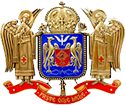The events in December brought about a series of changes not only in the political and social life of the country, but also in the religious one. Soon after those events, our Church was faced with new challenges, which she would be obliged to face in the future too, but for which she was not prepared. For example, as far back as December 1989, the existence of the Catholic Church of Latin Rite (former Greek Catholic or United) was recognised; in March 1990, the Vatican appointed six Catholic bishops of “Latin Rite” and five others of “Greek Rite” or Oriental (for Blaj, Oradea, Lugoj, Cluj-Napoca and Baia Mare) without the previous approval of the Romanian state authorities. In 1991, the metropolitan of Blaj, Alexandru Todea, was raised to the rank of cardinal by the Pope. These hierarchs, as well as some priests who had not returned to Orthodoxy in 1948 or those ordained in the meantime, started an intense proselyte activity, in view of attracting Orthodox priests and faithful to the Catholic Church of Greek Rite. In spite of the fact that they have a small number of faithful (228,377 according to the census of 1992), yet they reopened Theological Academies in Blaj, Cluj-Napoca, Baia Mare and Oradea.
During the first months of 1990, the legal existence of several neo-Protestant cults was recognised (as associations). All these cults started an intense proselyte activity among the Orthodox faithful, with the permanent material support from abroad and many persons engaged in proselyte activity who have come to our country to preach Christ, as if our people had not known Him for almost two thousand years. Nevertheless, the census in January 1992, presents the following confessional configuration of Romania: out of 22.760.449 inhabitants, 86,8% are Orthodox, 5% Roman Catholics, 3,9% Reformed, 1% Catholics of Greek Rite (“United”), 1% Pentecostals, 0,5% Baptists, the rest of the cults being under 0,5% (the atheists represent only 0,2%).
As for the cultural field, we mention the setting up of new units of theological education, for the needs of the Church: Faculties of Theology in Iasi, Cluj-Napoca, etc., new seminaries (besides the six existent before 1989), in Galati, Ramnicu Valcea, Alba Iulia, Baia Mare, Suceava, Monastery of Agapia (for girls) etc; the entire higher theological education was included in the state university system in the respective cities and re-organised in several branches: Pastoral Theology, Didactic Theology, Social Theology; girls are admitted in all theological schools.
A series of new periodic publications appeared in almost every diocese: Vestitorul Ortodoxiei (Herald of Orthodoxy) in Bucharest, Candela Moldovei (Votive Light of Moldova) in Iasi, Invierea (Resurrection) in Timisoara, Renasterea (Renaissance) la Cluj, Tomisul ortodox (Orthodox Tomis) in Constanta, Credinta strabuna (Ancient Faith) in Alba Iulia, Credinta romaneasca (Romanian Faith) in Baia Mare, Legea romaneasca (Romanian Law) in Oradea, Biserica si Scoala (Church and School) in Arad, Foaie diocezana (Diocesan Paper) in Caransebes, Calauza ortodoxa (Orthodox Guide) in Galati, Lumina lina (Light) in Arges, etc.
All the monasteries and sketes abusively dissolved in 1959 were re-opened or new ones were set up, especially in Transylvania. At the same time - in spite of the financial difficulties the Church is faced with - the foundations of hundred of churches were laid, especially in towns and monasteries (Ramet, Recea, Mures, Sambata de Sus etc.)
The Church resumed its humanitarian activity from a different perspective, by setting up charitable associations to help the orphans, old and handicapped people, or by granting religious assistance in hospitals, orphanages and old people’s homes.
The Church also maintains its foreign relations, by participating in the activity developed within the framework of the World Council of Churches, delegations of our Church participating in the proceedings of the 7th General Assembly (1991, Canberra, Australia), the 8th General Assembly (1998, Harare, Zimbabwe) and the 9th General Assembly (2006, Porto Alegre, Brasil). She participated, through her delegates, in various meetings of the Conference of European Churches, of certain Joint Commissions for Dialogue with some other Churches. Church delegations visited us several times, both from the sister Orthodox Churches, as well as Roman Catholic, Anglican and Protestant ones. Romanian synodal delegations, headed by the Head of the Church or by other hierarchs took turns in visiting other sister Orthodox Churches and other heterodox Churches. The Faculties of Theology established “relations of partnership” with Faculties abroad, especially with the Catholic and Protestant ones.
In spite of the difficulties we are passing through, the hierarchs, theology professors and priests of the Romanian Orthodox Church continue their missionary, social and cultural activity in order to be worthy of their forerunners, whose memory they want to honour through an even more fruitful activity.
Academician Rev. Prof. Dr. Mircea Pacurariu

